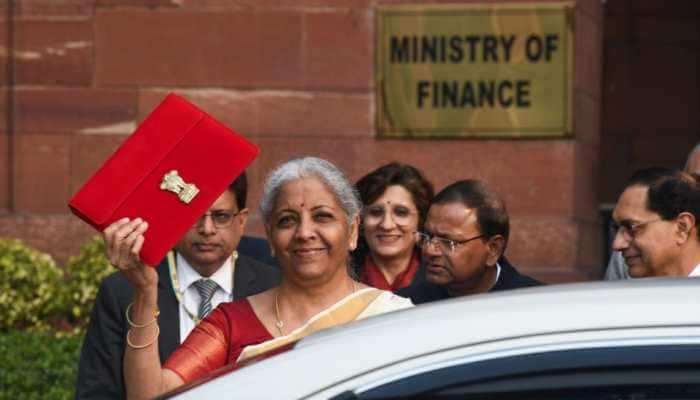Supreme Court pulls up petitioners, dismisses PILs alleging illegal construction around Shree Jagannath temple by Odisha govt
The Supreme Court said "In the recent past, there is a mushroom growth of PILs. Many such petitions are either publicity interest litigation or personal interest litigation. We deprecate the practice of filing such PIL as it is a waste of judicial time and it needs to be nipped in bud so that development work is not stalled."
- The Supreme Court dismissed pleas alleging illegal construction and excavation at Shree Jagannath temple in Puri
- The apex court also deprecated the practice of filing PILs for publicity or personal interests, wasting the court`s time
- A bench of Justices BR Gavai and Hima Kohli rejected two PILs and imposed a cost of Rs 1 lakh each on two petitioners
Trending Photos
) Zee News file pic
Zee News file pic New Delhi: The Supreme Court on Friday dismissed pleas alleging illegal construction and excavation at Shree Jagannath temple in Puri by the Odisha government and deprecated the practice of filing PILs for publicity or personal interests, wasting the court`s time. A bench of Justices BR Gavai and Hima Kohli rejected two PILs and imposed a cost of Rs 1 lakh each on two petitioners.
In its order, the SC bench said "In the recent past, there is a mushroom growth of PILs. Many such petitions are either publicity interest litigation or personal interest litigation. We deprecate the practice of filing such PIL as it is a waste of judicial time and it needs to be nipped in bud so that development work is not stalled."
The apex court refused to entertain petitions seeking a stay on Jagannath Temple Corridor project work and termed it as a necessity for providing public amenities. It is observed that the construction activities are meant to provide facilities and amenities to devotees. The top court was hearing PILs challenging the order of the Orissa High Court refusing to restrain the state government from carrying out excavation work around the Shree Jagannath temple at Puri, Odisha.
On Thursday, the bench heard arguments of advocates representing petitioners and the state government and reserved the order for today. Senior advocate Mahalaxmi Pavani, appearing for one of the petitioners, had argued that as per the Ancient Monuments and Archeological Sites and Remains (AMASR) Act 1958, the State government has to mandatorily obtain a NOC from the competent authority for carrying out any works in a protected site.
The state took a NOC from the National Monuments Authority for the construction works, however, the competent authority under the Act to grant the NOC is the Director or Commissioner of Archeology Survey of India, she had added. There is a clear embargo that there cannot be any construction in the prohibited area, the senior advocate said. She further contended that permission was not taken to construct a regulated area.
Advocate Vinay Navare, appearing for another petitioner, had argued that the temple is centuries old and the report of the officer of the Archeology department records that construction carried out is within a prohibited area. Cracks have been found in the temple and its wall and the state government is doing unauthorized construction work which is posing a serious threat to the structure of the ancient temple of Mahaprabhu Shree Jagannath, the petitioners had contended.
Ashok Kumar Parija, Advocate General of Odisha, however, had opposed the pleas and said that under the AMASR Act, the authority is the NMA, and the competent authority has been notified to be Director Culture, State of Orissa. The State government is undertaking the activities to provide amenities to the pilgrims and the same has permission from the NMA, he had said.
The pleas challenged the order of the division bench of Orissa High Court and alleged illegal excavation and construction work by the Odisha government at Shree Jagannath temple.The appeals filed in the apex court alleged that the excavation of the area close to the temple wall poses a serious threat to the temple`s structural safety. It sought a stay of the operation of the construction work near the temple.
The High Court, while hearing a PIL, had asked the Archeological Survey of India as well as the State government agencies to conduct a joint inspection of the area and submit a report. The ASI had informed the High Court that there was every possibility of archaeological remains at the heritage site being destroyed due to the excavation work for the corridor.
It had been said that the Odisha Bridge Construction Corporation, the PSU which is undertaking the construction, may have destroyed archaeological remains from around the 12th century Jagannath temple by carrying out a deep excavation to build common facilities under the `Srimandir Parikrama` plan. It had further submitted that the government had not obtained any permission to carry out the construction work.
The state, however, contended that it had obtained all the requisite permission for the construction. The High court, while taking into note the ASI`s report, had directed the State government to file an affidavit by June 20 and fixed June 22 as the next date of hearing.
One of the appeals, filed through advocate Gautam Das said that as per Section 19 of the Ancient Monuments and Archeological Sites and Remains Act, no person can construct any building within a 100 meters radius protected area and the temple was declared a protected area in 1975, hence such construction is happening at a structure called Meghanad Pacheri which is an integral part of the temple.
It said the state government is trying to construct certain structures by using heavy machinery and has already dug up to 30 feet from the ground level adjacent to the western side of Meghnad Pacheri and added that the equipment used for construction is putting pressure on the foundation of the temple.
Odisha Chief Minister Naveen Pattanaik 2021 had laid down the foundation stone for the Jagannath Temple corridor project wherein the 75-metre perimeter of the temple was sought to be transformed into a heritage corridor to attract devotees. `The Srimandir Parikrama project` has been designed to have a wide terraced green landscape and a pedestrian-only pathway.
Stay informed on all the latest news, real-time breaking news updates, and follow all the important headlines in india news and world News on Zee News.
Live Tv







)
)
)
)
)
)
)
)
)
)

